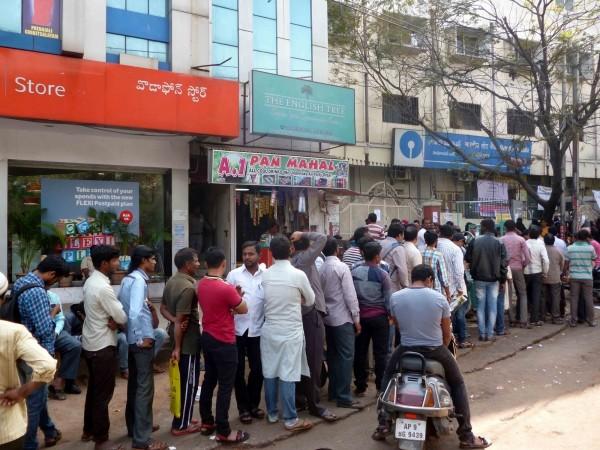
NITI Aayog CEO Amitabh Kant on Friday said that the cash crunch caused due to demonetisation of Rs 500 and Rs 1,000 currency notes may be resolved only by the mid or end of January 2017. Around Rs. 12 lakh crore in cash would be returned to the banking system by then.
Kant also mentioned that after the Centre's eventual move to a transaction ecosystem, cost would not be associated with digital transactions, while cash holdings could attract a cess, the Hindu reported. For example, payments made by debit or credit cards usually levy a Merchant Discount Rate of 0.75 per cent to one percent, which has been temporarily waived to ease the hardships of the citizens who have been facing cash crunch since the announcement.
"Around Rs. 3.5 trillion of the Rs. 17 trillion in circulation before demonetisation was pure black money and the increase in digital transactions will reduce the need for cash by about Rs. 2 trillion... So the economy needs Rs. 11-12 trillion in cash to finance normal transactions. This will be back in the system by mid-January or maybe the end of January," Kant said.
Aadhaar-enabled payment system (AEPS)
Electronics, Information Technology, Law and Justice Minister Ravi Shankar Prasad also said that the Centre is working towards promoting Aadhaar-enabled payment system (AEPS), which means that more and more bank accounts would be linked to Aadhaar.
"We are going to promote an Aadhaar-enabled payment system (AEPS) in coordination with the Finance Ministry. About 40 crore bank accounts have been linked to Aadhaar," Prasad said on Friday adding that 99 percent of the adult population had Aadhaar cards and the government was working towards linking the rest of the bank accounts with the Aadhaar numbers.
According to Prasad, AEPS was necessary since almost 30 crore people still do not use smartphones, which is why they are unable to do online transactions or use mobile wallets or e-wallets whenever they wish to.
Kant said that the country can introduce the Jan Dhan-Aadhaar-Mobile (JAM) trinity since it had the digitisation infrastructure required to do the same and also added that India will have to prepare itself for disruption if it aspires to grow to a $10 trillion economy.
"Aadhaar-enabled payments are the biggest disruption in India... Nearly 30 crore people in India without mobile connections can use Aadhaar and thumb impression or iris scans for digital payments. In the next 6-7 months, every smartphone user will be able to make Aadhaar-based payments and even will allow each phone to act as an ATM using a device that can attach to the phone and scan fingerprints," Kant said.













